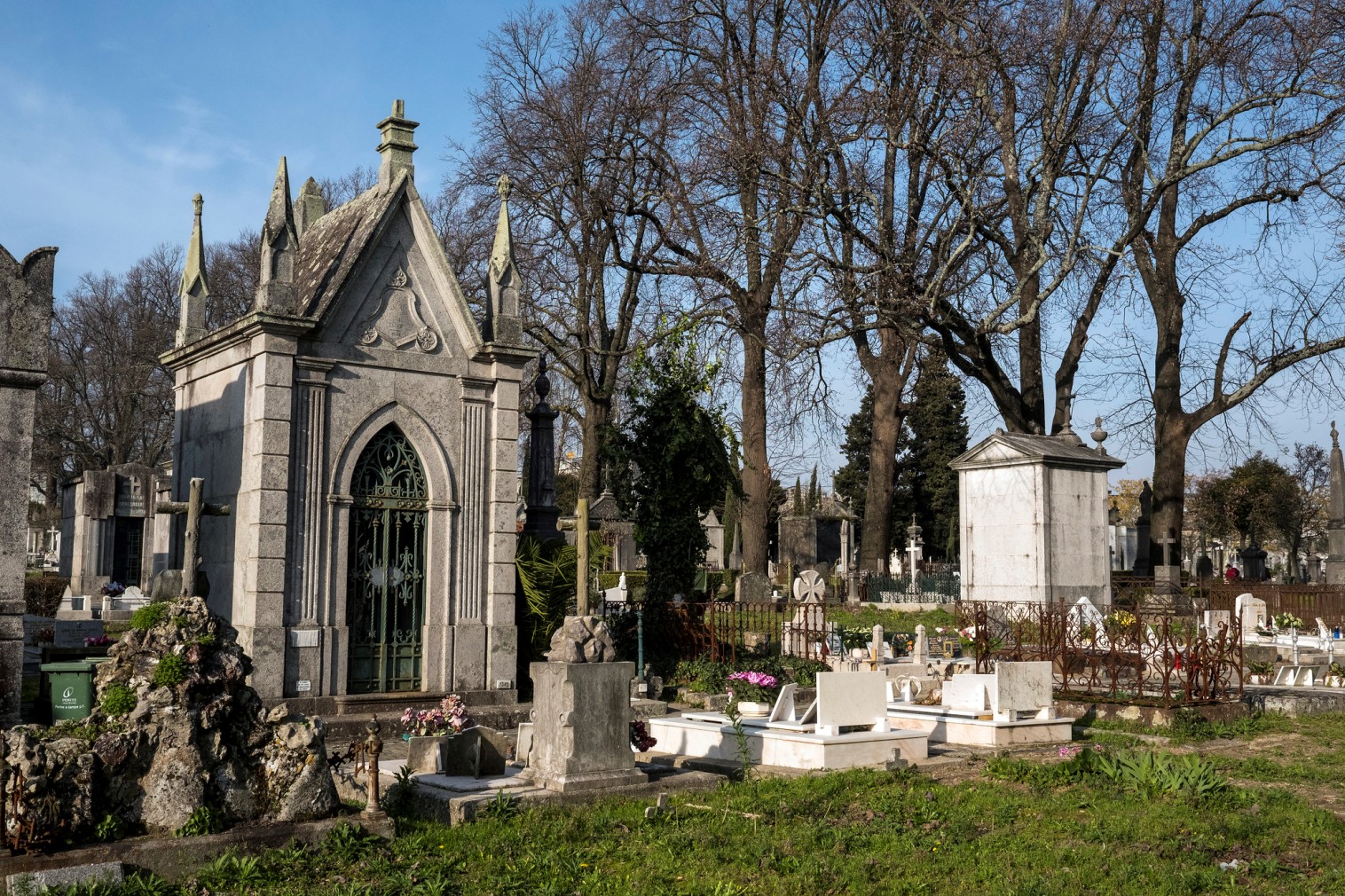
The history of burials in Portugal
The habit of turning the inside of churches into cemeteries dates back almost to the beginning of Christianity, although it was often considered an abuse, since it implied the burial of sinners alongside relics of saints. However, the Catholic Church was never able to prevent this accomplished fact.
The demographic pressure and sanitation issues, in the ideological context of the Enlightenment, were the main factors that made some voices rise against inhumations inside churches, from the 18th century onwards. In Portugal, the first legislative attempts to stop burials inside churches were not successful, mostly because the laicisation of the Portuguese society was quite slow in comparison with some other European countries. Thus, the official creation of the Portuguese public cemeteries occurred only in 1835. However, there were previous experiments and Porto, as was common at that time, was the first to establish cemeteries outside of churches.
In 1833, the Porto Siege generated an extremely difficult sanitation situation in the city and led to an outbreak of a very deadly epidemic: the cholera morbus. Burial sites rapidly filled up, and the situation grew worse due to the soldiers who died fighting the Miguelists.
The Prado do Repouso Cemetery
In December of 1839, the first public cemetery in Porto, Prado do Repouso, was inaugurated, although for about two decades it was not very “modern”. Indeed, on this vast estate, partially transformed into a cemetery, only the poorest inhabitants of Porto were buried. The wealthy and more “enlightened” citizens preferred to be buried in the Lapa private cemetery. If they were more “conservative”, maybe they would prefer being buried in the cemeteries of several other Orders and Brotherhoods that existed in the city. These had cemeteries outside of their churches (partially complying with the 1835 decree), but still next to them and with no modern spatial arrangement.
Considering all these factors, the municipal public cemetery of Prado do Repouso couldn’t possibly become any greater. Local authorities have tried, for several times but unsuccessfully, to stop the privilege of the Orders of having private burials. For this reason, there were serious riots in 1851.
The Private Sections of Municipal Cemeteries
Following the 1855 epidemic, all the cemeteries belonging to the Brotherhoods had to be reopened, although the maintenance of those in no condition was increasingly less consensual. In a lengthy and difficult process, each Brotherhood made a deal with the Porto City Council to acquire private sections in the municipal cemeteries.
The Misericórdia do Porto (Brotherhood of Mercy) was the first to do so, acquiring a lot in Prado do Repouso for that purpose. It was followed by the Ordem do Terço e da Caridade (Order of the Rosary and of Charity), and by the Confraria do Santíssimo Sacramento de Santo Ildefonso (Fraternity of the Blessed Sacrament of Saint Ildephonse).
Cemetery location
Largo do Padre Baltazar Guedes (South and main entranc)Largo Soares dos Reis (North entrance)
4300-059 Porto
Portugal
*Photo source: https://visitporto.travel/pt-PT/poi/5cd04b4cf979e000011d98f1#/
